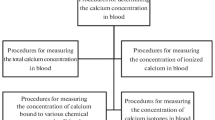Abstract
A method is described for simultaneous estimation of zinc and copper in erythrocytes by hemolysis and flame aspiration atomic absorption spectrophotometry. Red blood cells (RBC) were also analyzed by the commonly used nitric acid digestion method for comparison. The difference in the results of zinc analyses of fifteen RBC samples by the two techniques was 0.5 ± 0.8 (mean ± SD) μg Zn/g hemoglobin indicating that these methods yield essentially similar results. Because of the low concentration of copper in RBC, results obtained by the acid digestion method were unreliable since nitric acid and undissolved particles of digested RBC in the acid extract increased instrumental noise to an unacceptable level. Average concentrations of zinc and copper estimated in RBC of 25 normal subjects by the present described technique (hemolysate method) were 43.9 and 2.0 μg/g Hb, respectively. No sex-related differences in RBC zinc or copper concentrations were found. The hemolysate method is simpler and faster to perform than the more commonly used nitric acid digestion method.
Similar content being viewed by others
References
S. Meret and R. I. Henkin,Clin. Chem. 17, 369 (1971).
E. Dennes, R. Tupper, and A. Wormall,Biochem. J. 78, 578 (1961).
S. K. Mahajan, A. S. Prasad, P. Rabbani, W. A. Briggs, and F. D. McDonald,J. Lab. Clin. Med. 94, 693 (1979).
D. J. Kosman and R. I. Henkin,Am. J. Clin. Nutr. 34, 118 (1981).
R. C. Whitehouse, A. S. Prasad, P. L Rabbani, and Z. T. Cossack,Clin. Chem. 28, 475 (1982).
R. J. Eilers,Am. J. Clin, Pathol. 47, 212 (1967).
L Davidson and J. B. Henry, inClinical Diagnosis by Laboratory Methods, I. Davidson and J. B. Henry, eds., Saunders, Philadelphia, 1974, p. 110.
T. R. Talbot, Jr. and J. F. Ross,Lab. Invest. 9, 174 (1960).
G. A. Rose and E. G. Willden,Brit. J. Urol. 44, 281 (1972).
K. Mansouri, J. A. Halsted, and E. A. Gombos,Arch. Intern. Med. 125, 88 (1970).
A. S. Prasad, D. Oberleas, and J. A. Halsted,J. Lab. Clin. Med. 66, 508 (1965).
H. D. Zaidan, Zinc Investigations in Sickle Cell Anemia. Doctoral Dissertation, Dept. of Food, Nutrition and Institution Administration, College of Human Ecology, Univ. of Maryland, College Park, Maryland.
R. I. Henkin, inZinc, University Park Press, College Park, MD, 1979.
Author information
Authors and Affiliations
Rights and permissions
About this article
Cite this article
Agarwal, R.P., Henkin, R.I. A simple method for simultaneous estimation of zinc and copper in erythrocytes. Biol Trace Elem Res 7, 199–208 (1985). https://doi.org/10.1007/BF02989246
Received:
Accepted:
Issue Date:
DOI: https://doi.org/10.1007/BF02989246



